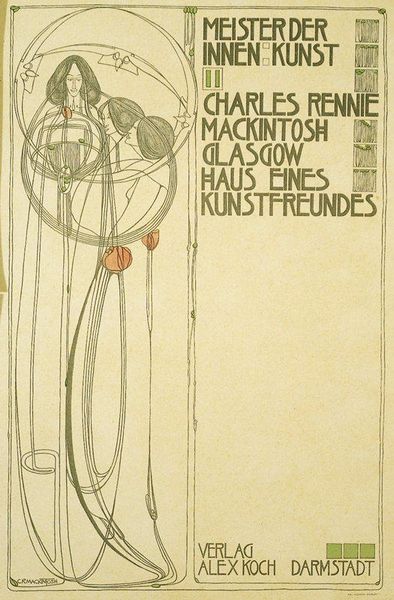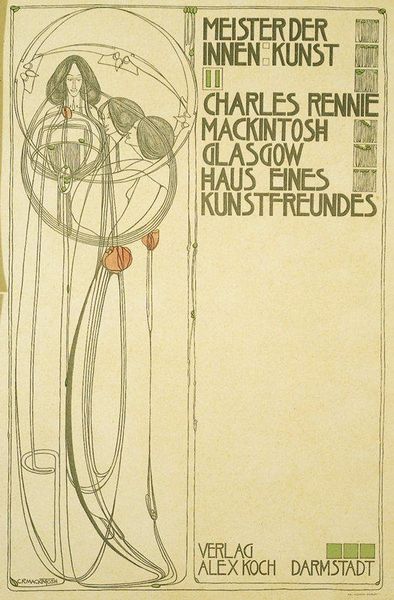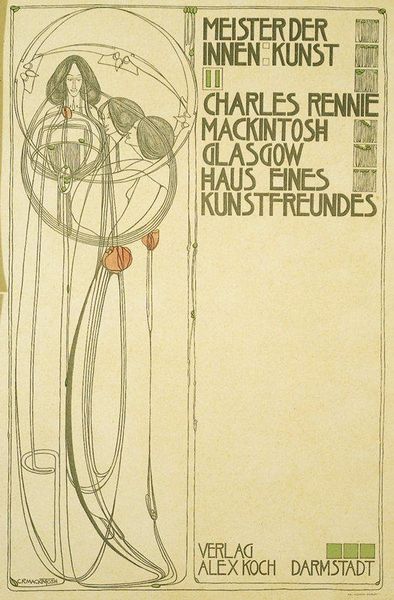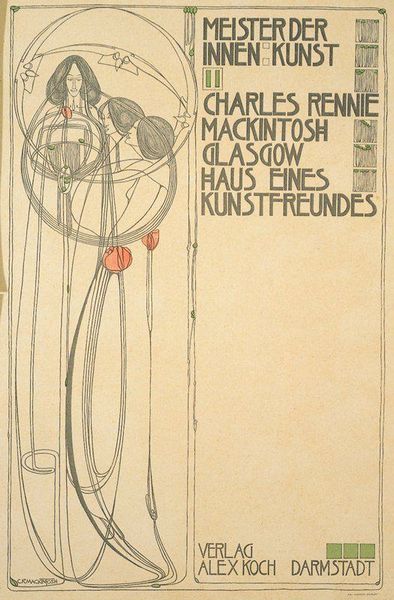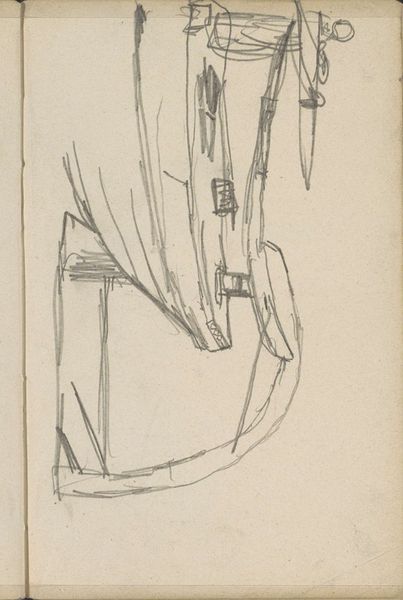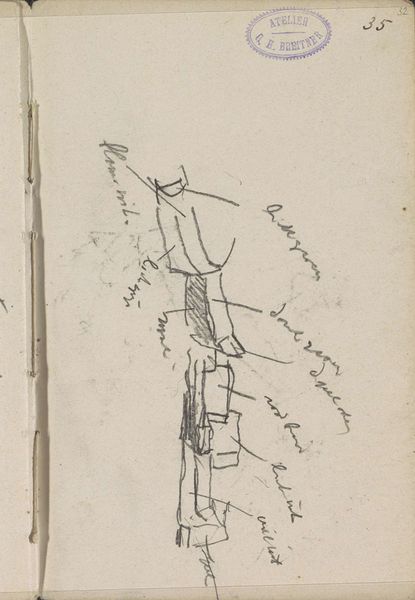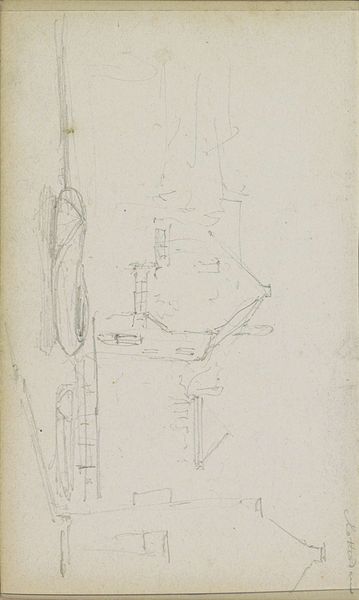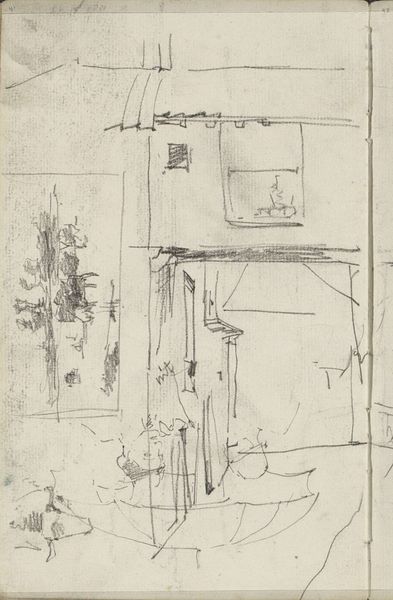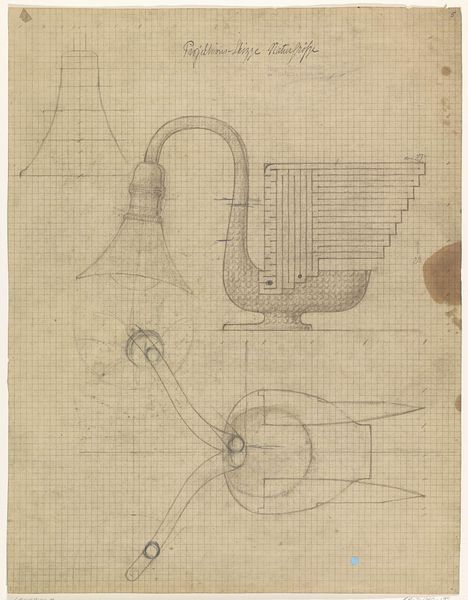
drawing, graphic-art, print, typography
#
drawing
#
graphic-art
#
art-nouveau
#
hand-lettering
# print
#
hand drawn type
#
hand lettering
#
glasgow-school
#
personal sketchbook
#
typography
Dimensions: 12 x 19 1/8 in. (30.48 x 48.58 cm) (sight)22 7/8 x 28 3/8 x 1 3/8 in. (58.1 x 72.07 x 3.49 cm) (outer frame)
Copyright: No Copyright - United States
Curator: Mackintosh’s “Plate 3,” created in 1902, uses graphic art and drawing techniques characteristic of the Glasgow School's embrace of Art Nouveau. The piece features hand-lettering and typography—let’s begin with your immediate reaction. Editor: There’s such a haunting elegance about it. The figures, elongated and almost spectral, seem to float amidst the stark text. The interplay of geometric structure with organic, flowing lines is quite compelling, and gives a somber, mystical mood overall. Curator: Mackintosh blurred the line between fine art and applied design, a tenet central to the Arts and Crafts movement. This piece, an advertising poster, uses the visual language we usually ascribe to "high art" to promote interior design ideals, speaking to a bourgeois clientele and using visual design as the conduit to their material wants. Editor: It’s interesting to view this through the lens of societal expectations around artistry and commerce. There's tension— isn't there— between the high-minded aesthetics of the Glasgow School, their vision for total work of art, and the very capitalist venture it supports, highlighting potential class implications around access and aspiration. Curator: Precisely. And we must consider how gender functions within this design. The idealized female form, so prevalent in Art Nouveau, is present, stylized into flowing lines and patterns. She seems a symbol for domestic beauty rather than an agent within the spaces it is advertising, solidifying rigid gender roles. Editor: True. The women are rendered as ethereal ideals, more decoration than inhabitant, reflecting early twentieth-century patriarchal expectations, where women were the embodiment of decorative artistic virtues as it applied to interior spaces. Curator: Absolutely, we are seeing a design where form is deployed in the service of commercial interests—but it still creates, nonetheless, spaces for artists like Mackintosh to experiment with their art outside the boundaries of art object. Editor: It seems to act as a mirror, reflecting the hopes and anxieties of its time—the promise of artistry and consumerism, intertwined and inherently gendered. Thank you. Curator: Indeed. By interrogating these details and the circumstances of its creation, we unveil the complex conversation the piece sets in motion, bridging labor, gender, and class.
Comments
No comments
Be the first to comment and join the conversation on the ultimate creative platform.
